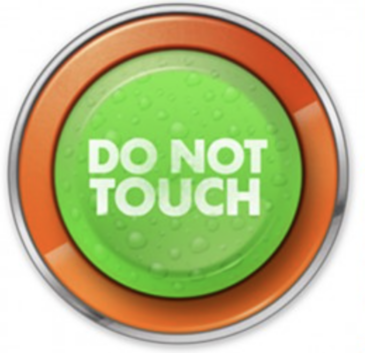
What happens when you are trying to design a new technology for kids and things do not go as expected? In the case of the University of Maryland KidsTeam, you might help create Nickelodeon’s Do Not Touch button—an interactive button that plays with kids’ desire to do exactly what they’ve been told not to do. This is an example of the Cooperative Inquiry method of technology co-design in action, where children engage in the design process in equal partnership with adults. Adults can come to the co-design task from different perspectives, including as the primary developer of a new technology for children or a researcher studying the method. Children and adults work together throughout the design process using a variety of techniques including low-tech prototyping, sticky note critiquing, and layered elaboration. While some research has examined the impacts of co-design on the participating children, little research has studied adults’ experiences. Medha Tare, senior director of research at the Joan Ganz Cooney Center, and Mona Leigh Guha, director of research and evaluation at PBS Kids, recently presented their work on this topic at the 2023 Interaction Design for Children conference in Chicago.
In order to better understand the experiences of adult designers, researchers at the Cooney Center posed the question: What do current and former adult co-designers report as their perceptions, learnings, challenges, and benefits of a co-design experience with children?
To address this question, we conducted an online survey with adults (N=18) who have worked with children as part of a co-design process currently or in the past while they were leading the design of a technology. The survey explored the nature of their participation in co-design, their understandings or learnings from the experience, their thoughts on the value of the experience, how it ultimately impacted the technology design, and challenges or improvements they would suggest to the process.
Common themes in adults’ experiences
The open-ended survey responses were analyzed to identify common themes. One of the primary themes was around what adults learned from their experiences, ranging from the importance of gathering varied perspectives in the design process to specific design skills and techniques that they continue to employ.
I have grown personally and have learned from children throughout the years. It’s hard to list all of the benefits but some include varied perspectives, humility, spontaneity, improvisational skills, better abilities to see beyond what is being said and interpret deeper meaning, and more. – University-affiliated researcher who has participated in and led co-design teams for 20 years
Another important theme was the value of the ideas generated during these co-design sessions. Adults reported that co-design with children improved the usability of the end product and its ability to meet the needs of its intended users. Adults also valued children’s creativity and their ability to come up with unique and innovative ideas.
We would have created our own “adult” version of fun without understanding the inherent factors that made something fun for children. We’re hinged. They’re not. It’s in that space that creativity happens. – Technology designer from a major children’s media company who participated in co-design for 3 years
The survey also solicited ideas for what could be changed or improved. While the feedback on using Cooperative Inquiry was mostly positive, some adults shared concerns that the ideas could be biased toward the small number of children who participated; similarly, one participant noted the challenge in recruiting more diverse children and families.
When asked if they would recommend a co-design process with children to other designers in the field, on a scale of 1 to 5, participants’ average response was 4.7. Some caveats shared included that some situations may not afford the bandwidth and/or resources necessary to undertake co-design with children, and that relaying the business value of the investment can be challenging. Though one participant who represented a major children’s media company noted the value of the method for “teaching execs how kids think.”
The road ahead

This work represents a first step toward understanding the immediate and long-term benefits and challenges for adults engaging in co-design with children. Adults strongly valued the varied perspectives that co-designing with children offered and felt that the resulting products’ usability and ability to meet children’s needs were greatly improved through this process. Adults also noted both the personal benefits, such as developing empathy and patience, as well as professional benefits, including opening new career opportunities. The practice will continue to evolve and has already seen new ways of working online with youth and bringing new communities into the work by expanding where design work happens.
Future research may include conducting a more formal investigation of both children and adults’ experiences with technology co-design processes and considering ways to investigate the impact that co-design processes have on finished and marketed technologies. At the Cooney Center, we will continue to explore the potential for co-design and other methods of designing for children in our Sandbox initiative.